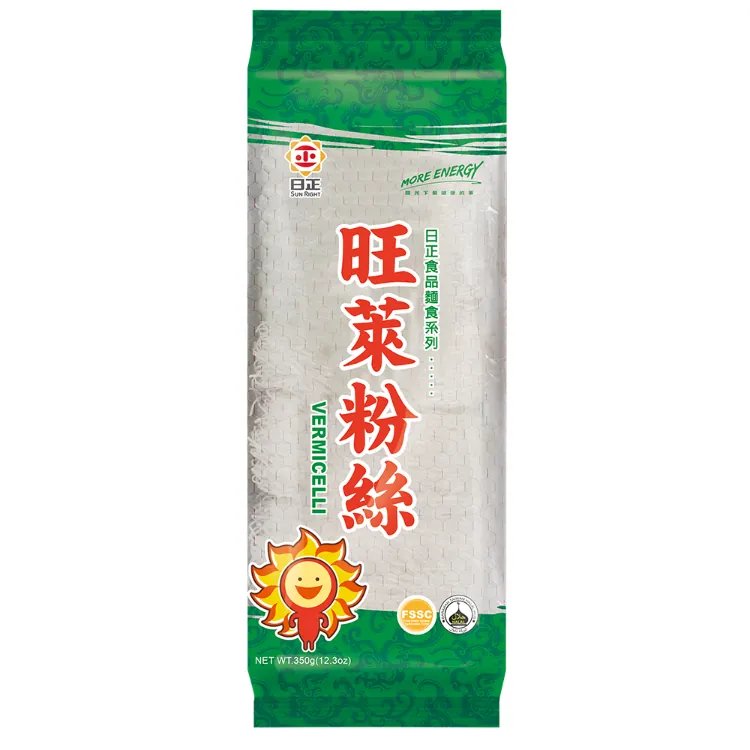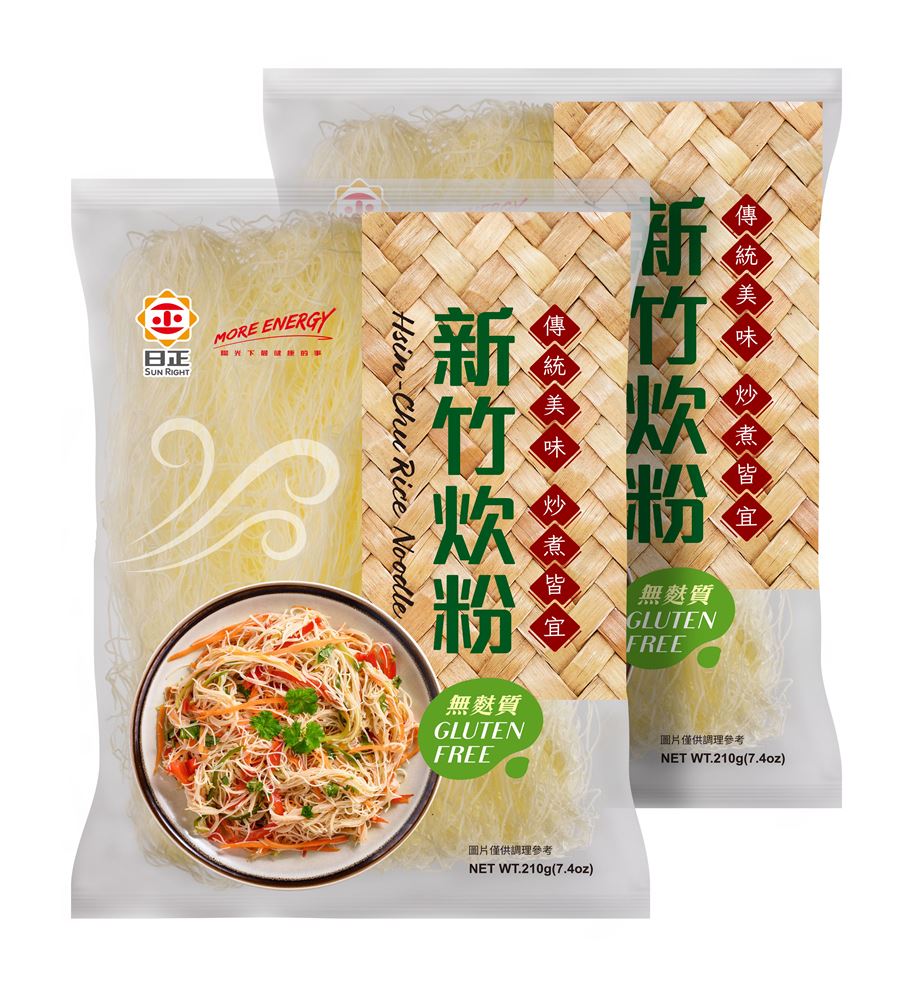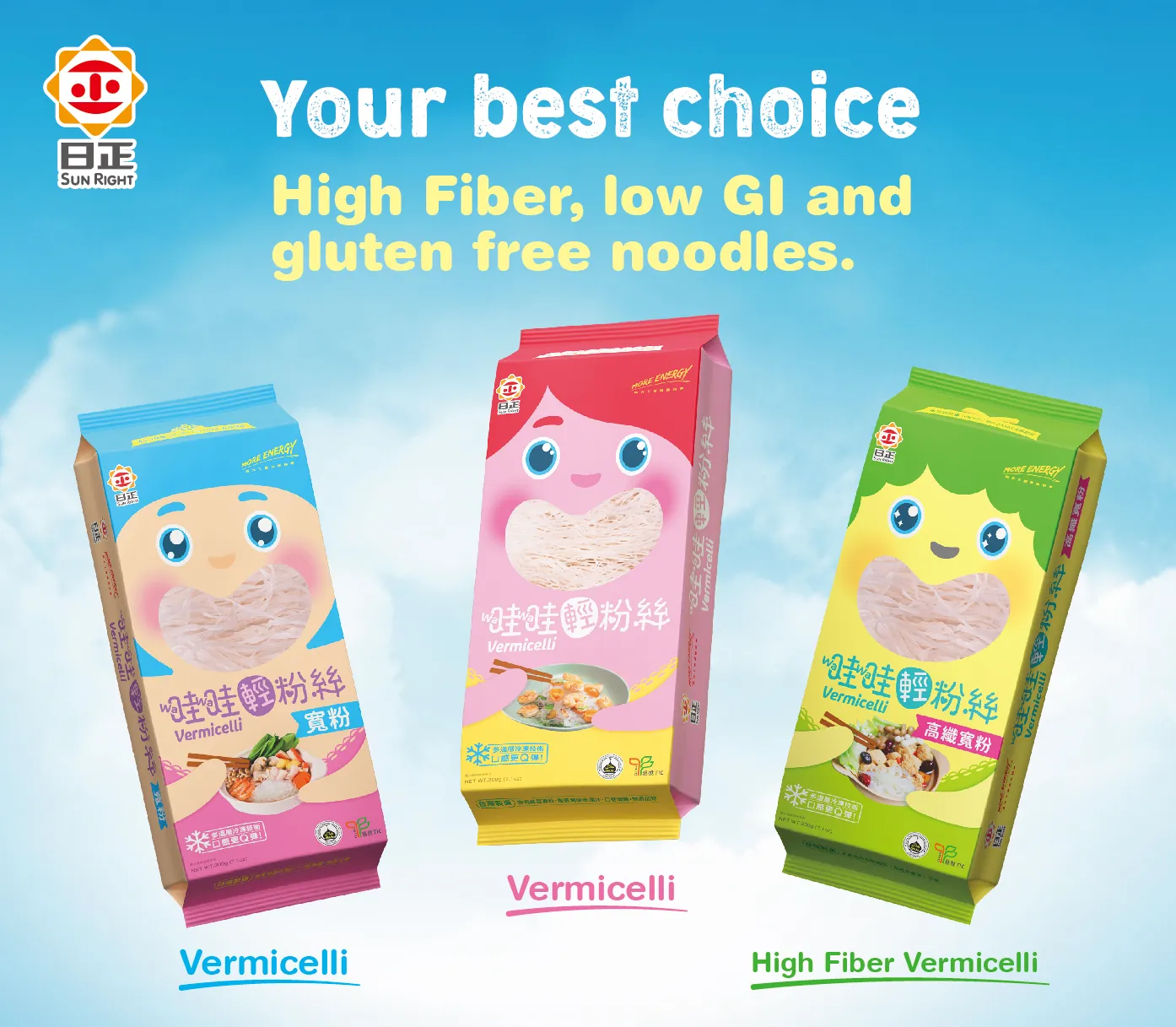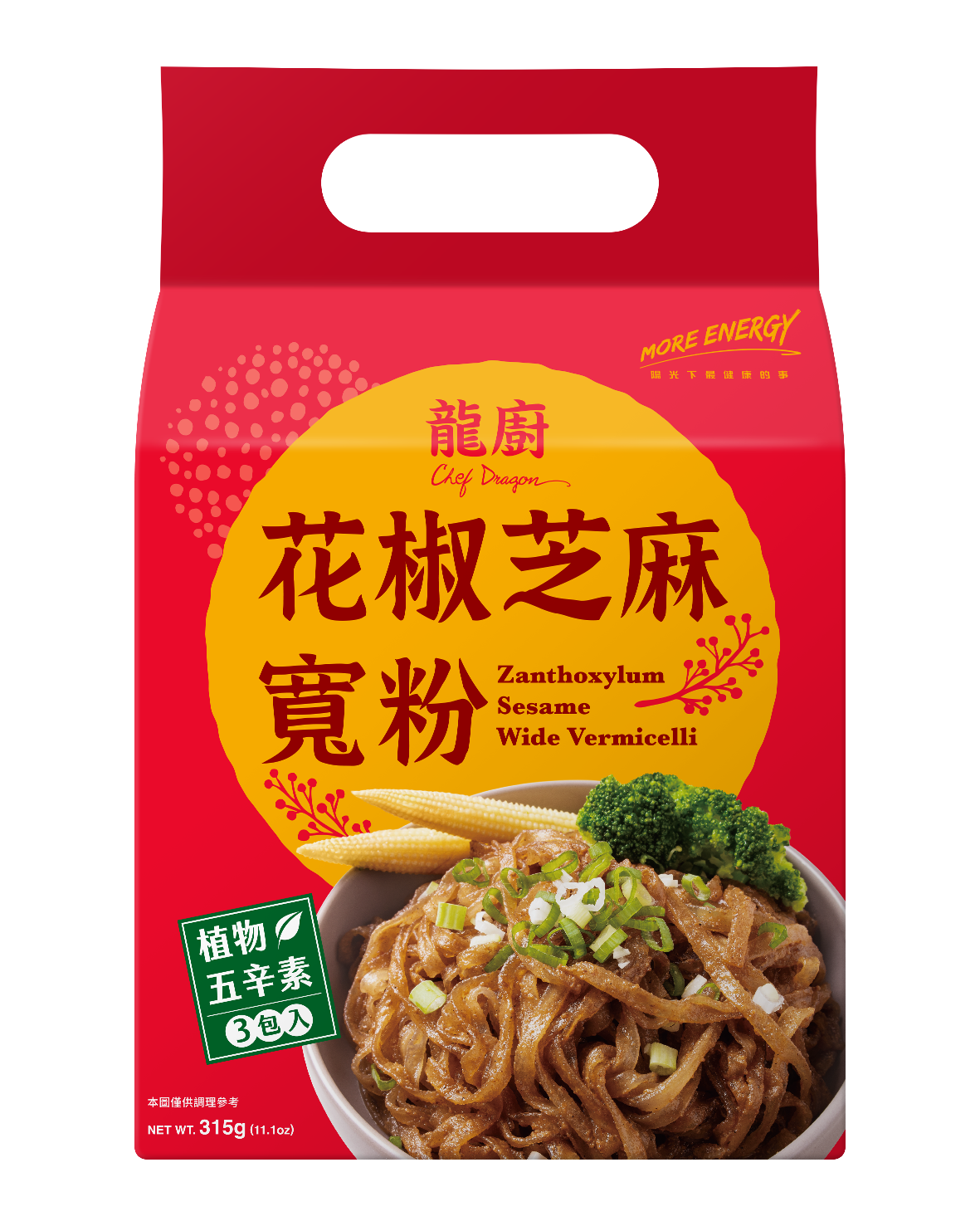Glass Noodle Distributor Insights: The Key to Meeting Today’s Gluten-Free and Global Food Trends
Glass noodle distributors play a pivotal role in the culinary landscape, particularly within Asian cuisine where these unique noodles are a staple ingredient. As the popularity of glass noodles continues to surge, understanding the benefits of partnering with a distributor becomes increasingly essential. Not all glass noodles are created equal; distributors offer a diverse range of options, from traditional mung bean noodles to innovative sweet potato and cassava variations. This variety allows culinary enthusiasts and food businesses alike to explore countless dishes, enhancing their menus with flavors and textures that delight.
Imagine the versatility of glass noodles in various culinary applications, whether you’re whipping up a quick stir-fry, preparing a comforting soup, or crafting an elegant salad. The insights you gain from a knowledgeable glass noodle distributor can elevate your cooking, showcasing the unique qualities of each noodle type. Additionally, distributors often provide valuable information on the health benefits and cooking techniques that can transform your dishes from ordinary to extraordinary, thanks to their expertise and experience in the industry.
In the following sections, we’ll delve into the compelling reasons for collaborating with a glass noodle distributor, exploring the types of noodles available, their distinct advantages, and what makes specific varieties — like the Hezhai Hot and Sour Glass Noodles — favorites among culinary professionals. With practical insights and detailed comparisons, this article aims to empower you to make informed decisions in your culinary pursuits and maximize the impact of glass noodles in your kitchen.
Types of Glass Noodles Offered by Distributors
When exploring the world of glass noodles, it’s essential to understand the variety available to you through distributors. Each type brings its unique qualities, catering to numerous culinary applications, especially popular in Asian cuisine. Here are some common types of glass noodles you can find in distributor inventories:
- Mung Bean Noodles (Cellophane Noodles)
- Ingredients: Primarily made from mung bean starch and water.
- Characteristics: Transparent when cooked, these noodles have a smooth texture and are often used in stir-fries and soups.
- Popular Dishes: Commonly found in dishes like spring rolls and hot pots.
- Sweet Potato Glass Noodles
- Ingredients: Crafted from sweet potato starch.
- Characteristics: These noodles are slightly thicker and chewier than their mung bean counterparts, offering a unique texture.
- Popular Dishes: Frequently used in Korean cuisine, such as in dishes like Japchae (stir-fried sweet potato noodles).
- Potato Glass Noodles
- Ingredients: Made from potato starch.
- Characteristics: They have a smooth texture and a mild flavor, making them versatile in various dishes.
- Popular Dishes: Ideal for soups or salads, often paired with flavorful dressings.
- Rice Noodles
- Ingredients: Made from rice flour and water.
- Characteristics: Softer and more delicate compared to other types. They tend to absorb flavors well.
- Popular Dishes: Staples in Thai and Vietnamese cuisine, such as Pad Thai and Pho
- Vermicelli Noodles
- Ingredients: Typically made from a mix of starches including potato, tapioca, and pea starch.
- Characteristics: Thin and flexible, these noodles cook quickly and are great for soups or salads.
- Popular Dishes: Often seen in stir-fried dishes or in salads like the Vietnamese Gỏi cuốn (spring rolls).
- Instant Glass Noodles
- Ingredients: Similar to traditional glass noodles but pre-cooked for convenience.
- Characteristics: Ready to eat in just a few minutes, these noodles are perfect for quick meals.
- Popular Dishes: Used in instant noodle cups and bowls for a fast and tasty meal option.
Comparison of Glass Noodle Types
|
Type |
Main Ingredient |
Texture |
Common Uses |
|
Mung Bean Noodles |
Mung bean starch |
Smooth and chewy |
Stir-fries, soups |
|
Sweet Potato Glass Noodles |
Sweet potato starch |
Chewy |
Japchae, hot pots |
|
Potato Glass Noodles |
Potato starch |
Mild and smooth |
Soups, salads |
|
Rice Noodles |
Rice flour |
Soft |
Pad Thai, Pho |
|
Vermicelli Noodles |
Mixed starches |
Thin and flexible |
Stir-fries, salads |
|
Instant Glass Noodles |
Various starches |
Soft and quick-cooking |
Instant meals |
These diverse types of glass noodles provide numerous options for culinary creativity. Whether you prefer the unique texture of sweet potato noodles or the delicate nature of rice noodles, partnering with a glass noodle distributor can give you access to these exciting ingredients that can enhance your kitchen offerings.
Why Choose Hezhai Hot And Sour Glass Noodles from Distributors
Hezhai Hot and Sour Glass Noodles have gained recognition as a top choice among distributors due to their unique flavor profile, quality ingredients, and versatility in various culinary applications. Here are some compelling reasons why these noodles stand out:
- Authentic Flavor Experience
- Hezhai Hot and Sour Glass Noodles offer an irresistible balance of spicy and tangy flavors, making them a popular choice for consumers who enjoy robust tastes. This distinctive flavor is achieved through a careful selection of natural spices and seasonings that create an authentic hot and sour experience reminiscent of traditional Asian dishes.
- High-Quality Ingredients
- Made primarily from premium starches such as mung bean and potato starch, Hezhai noodles boast a chewy texture and transparency that enhances their visual appeal. Additionally, the absence of preservatives and artificial additives ensures that consumers receive a wholesome product. The use of clean water in the manufacturing process further contributes to the noodles’ quality.
- Versatile Culinary Uses
- Distributors appreciate the versatility of Hezhai Hot and Sour Glass Noodles. They can be incorporated into a variety of dishes, from stir-fries and soups to salads and hot pots. Here are some examples:
- Stir-fried Dishes: Toss them with vegetables and protein for a quick, satisfying meal.
- Soups: Add them to broths to create heartwarming soups, perfect for colder weather.
- Cold Salads: Combine with fresh vegetables and a light dressing for a refreshing side dish.
- Distributors appreciate the versatility of Hezhai Hot and Sour Glass Noodles. They can be incorporated into a variety of dishes, from stir-fries and soups to salads and hot pots. Here are some examples:
- Quick Cooking Time
- One of the significant advantages of Hezhai Hot and Sour Glass Noodles is their quick cooking time, typically ranging from 1 to 5 minutes. This makes them an excellent option for busy consumers who want to prepare meals in a hurry without sacrificing flavor or quality.
- Gluten-Free Option
- With an increasing number of consumers opting for gluten-free diets, Hezhai noodles provide a suitable alternative. Made from naturally gluten-free ingredients, these noodles cater to those with dietary restrictions while still offering the delightful taste and texture of traditional noodles.
- Appealing Packaging
- Hezhai Hot and Sour Glass Noodles come in attractive packaging that resonates with younger consumers and those looking for convenient meal options. The modern design and clear labeling enhance the product’s shelf appeal, making it easier for distributors to attract potential customers.
- Strong Demand in International Markets
- As Asian cuisines continue to gain popularity worldwide, Hezhai Hot and Sour Glass Noodles are increasingly sought after in global markets. Distributors can leverage this growing interest to expand their offerings and meet consumer demands effectively.
Comparison of Hezhai Hot and Sour Glass Noodles with Other Noodles
|
Feature |
Hezhai Hot and Sour Glass Noodles |
Traditional Rice Noodles |
Instant Vermicelli Noodles |
|
Flavor |
Hot and sour flavor |
Mild and neutral |
Variable (depends on seasoning) |
|
Cooking Time |
1-5 minutes |
8-10 minutes |
3-5 minutes |
|
Dietary Restrictions |
Gluten-free |
Gluten-free (depends on type) |
Often gluten-free |
|
Ingredient Quality |
Premium starches, no preservatives |
Varies |
Often contains additives |
|
Versatility |
Very versatile |
Versatile |
Limited (usually for quick meals) |
In conclusion, the combination of authentic flavor, high-quality ingredients, quick cooking time, and versatility makes Hezhai Hot and Sour Glass Noodles a favorite among distributors. Their appeal in both local and international markets positions them as a must-have product for those looking to enhance their noodle offerings.
Exploring the Benefits of Cassava Glass Noodles for Distributors
Cassava glass noodles, often celebrated for their versatility and unique characteristics, present a range of benefits for distributors and customers alike. Here’s an exploration of the unique aspects that make cassava glass noodles a compelling choice in the market:
- Gluten-Free Alternative:
- Many consumers today seek gluten-free options due to health concerns or dietary restrictions. Cassava glass noodles are derived from cassava root, an entirely gluten-free ingredient. This makes them a safe choice for gluten-sensitive individuals and opens up the market to a broader customer base.
- Nutritional Value:
- Cassava is rich in carbohydrates and dietary fiber, providing a source of energy while aiding digestion. Unlike traditional wheat-based noodles, cassava noodles contribute to a more balanced diet and can help in maintaining digestive health.
- Versatility in Cooking:
- These noodles can be used in a wide variety of dishes—from soups and stir-fries to salads and curries. Their ability to absorb flavors makes them suitable for both Asian cuisine and fusion dishes.
- For example, they can be added to a traditional Taiwanese beef noodle soup or incorporated into a spicy stir-fry for a delightful texture contrast.
- Unique Texture:
- Cassava glass noodles have a distinct chewy texture that many consumers find appealing. This texture can enhance the overall dining experience, making dishes more enjoyable. Their elasticity also allows them to hold up well in soups and during cooking.
- Quick Cooking Time:
- One of the key advantages of cassava glass noodles is their short cooking time. They can typically be ready in just a few minutes, making them a convenient option for busy households or food service operations that require quick meal solutions.
- Sustainability:
- Cassava is a drought-resistant crop, making it a more sustainable option compared to other starch sources that require more water and resources. By promoting cassava glass noodles, distributors can appeal to environmentally conscious consumers.
- Market Expansion Opportunities:
- As interest in health-conscious and gluten-free products continues to rise, distributors can tap into new markets by including cassava glass noodles in their offerings. This trend is increasingly visible in Taiwan, where consumers are becoming more aware of healthy eating habits.
Here’s a quick comparison of cassava glass noodles with traditional glass noodles:
|
Feature |
Cassava Glass Noodles |
Traditional Glass Noodles (Mung Bean) |
|
Gluten-Free |
Yes |
No |
|
Main Ingredient |
Cassava root |
Mung bean starch |
|
Cooking Time |
3-5 minutes |
1-3 minutes |
|
Texture |
Chewy and elastic |
Smooth and slippery |
|
Nutritional Benefits |
High fiber, low GI |
Lower fiber content |
|
Culinary Use |
Versatile, absorbs flavors |
Best in soups and frying |
These unique aspects of cassava glass noodles not only provide benefits to customers but also position distributors to meet the demands of a changing market effectively.
From Ingredients to Procedure: Making Glass Noodles from Tapioca Starch
Creating glass noodles from tapioca starch is a fascinating process that combines simplicity with culinary artistry. This method is particularly popular in Taiwan, where glass noodles are a staple in various dishes, from hot pots to stir-fries. Below are the detailed steps and ingredients involved in making these versatile noodles.
Ingredients for Tapioca Glass Noodles
- Tapioca Starch: The primary ingredient, known for its elasticity and glossy finish.
- Water: Essential for hydrating the starch to create a smooth dough.
- Optional Additives: Depending on desired texture and flavor, some recipes include a small amount of salt or other starches (like potato or mung bean starch) to enhance the nutritional profile and taste.
Step-by-Step Procedure
- Mixing the Dough:
- In a mixing bowl, combine 1 cup of tapioca starch with around 1/2 to 3/4 cup of warm water.
- Stir until the mixture forms a smooth, lump-free dough. The dough should be pliable yet not too sticky.
- Shaping the Noodles:
- Once the dough is ready, take small portions and roll them into thin rods or shapes of your choice.
- For traditional glass noodles, aim for a diameter similar to that of a thin spaghetti.
- Cooking the Noodles:
- Bring a pot of water to a rolling boil.
- Gently add the shaped noodles into the boiling water. Cook them for 2-5 minutes, or until they turn translucent and tender. This quick cooking time is one of the key features that differentiates glass noodles from other types of pasta.
- Stir occasionally to prevent the noodles from sticking together.
- Cooling and Storing:
- Once cooked, remove the noodles from the pot using a slotted spoon and transfer them to a bowl of cold water. This step halts the cooking process and helps maintain their texture.
- Drain the noodles and they are ready to be used immediately in various dishes or stored in an airtight container in the refrigerator for future use.
Comparison of Noodle Types
|
Noodle Type |
Main Ingredient |
Texture |
Typical Dishes |
|
Glass Noodles (Tapioca) |
Tapioca Starch |
Chewy, transparent |
Hot Pot, Stir-fries |
|
Rice Noodles |
Rice Flour |
Soft, delicate |
Pho, Pad Thai |
|
Vermicelli Noodles |
Rice or Mung Bean Starch |
Thin and smooth |
Spring Rolls, Soups |
|
Sweet Potato Noodles |
Sweet Potato Starch |
Chewy, thicker |
Japchae, Stir-fries |
Example of Glass Noodle Usage in Taiwan
Glass noodles can be found in many Taiwanese dishes, such as Lu Rou Fan (braised pork rice) or served in a flavorful hot pot. They easily absorb the broth’s flavors, making them a delightful addition that complements various ingredients, from vegetables to meats.
By understanding the process of making glass noodles from tapioca starch, you can appreciate the culinary skills involved and the versatility these noodles offer in your cooking repertoire. Whether you’re adding them to a spicy stir-fry or enjoying them in a comforting soup, glass noodles are both delicious and nutritious!
In conclusion, partnering with a glass noodle distributor can significantly enhance your culinary offerings and appeal to a broad customer base. As we’ve explored, there is a diverse range of types available, including mung bean, sweet potato, potato, and rice noodles, each bringing unique textures and flavors to your dishes. Hezhai Hot and Sour Glass Noodles stand out for their authentic taste and versatility, making them a favorite among distributors and consumers alike. Similarly, cassava glass noodles offer a gluten-free alternative with impressive nutritional benefits and culinary flexibility.
The process of making glass noodles from tapioca starch further emphasizes their appeal, showcasing an artisanal approach that many food enthusiasts appreciate. With their quick cooking times and ability to absorb flavors, glass noodles can elevate a variety of dishes, from comforting soups to vibrant stir-fries.
Now is the time to take action! If you’re looking to expand your menu and cater to evolving consumer preferences, consider reaching out to a trusted glass noodle distributor. By incorporating these versatile ingredients into your offerings, you can satisfy the growing demand for unique, flavorful, and gluten-free options in the market. Embrace the culinary possibilities that glass noodles present and watch your business thrive!





